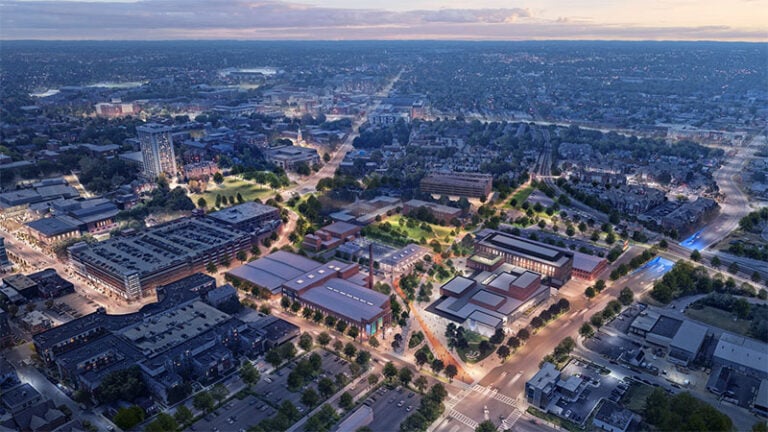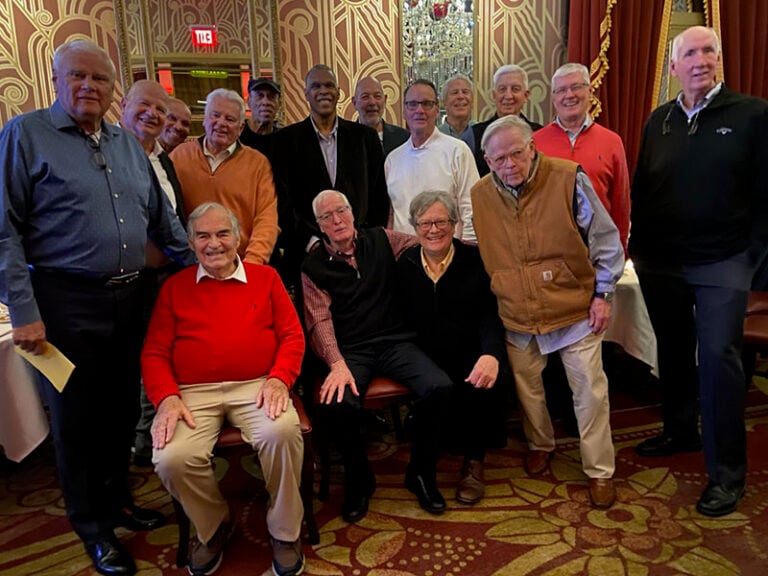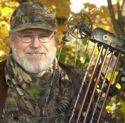In the battle to save and protect the biodiversity of plants and animals in Kentucky, the state’s first line of defense has always been its system of nature preserves.
The Kentucky State Nature Preserves Commission (KSNPC), established in 1976, manages 63 preserves across Kentucky — some 27,663 acres. This includes state natural areas, jointly managed with the Kentucky Department of Fish and Wildlife Resources.
Threats to these unique areas include encroachment of development, that can alter hydrology and lead to issues with the neighbors, including trespassing and incompatible uses.

Also, the spread of invasive, exotic plants such as Asian honeysuckle, overwhelm sensitive biological communities over time.
“Since the late 2000s we’ve had a drops in staffing and budget,” said Joyce Bender, branch manager for state nature preserves and state natural areas. “That has prevented us from doing what’s needed to sustain these communities (eradicate and contain invasive plant species). A lot of places are declining and it’s hard to take.”
Funds to Purchase Land
The Commission’s only source of state funds to purchase land for nature preserves is the Kentucky Heritage Land Conservation Fund (KHLCF). Established in 1994, KHLCF provides funding for preserving and conserving natural areas that habitat for rare and endangered species, migratory birds, and areas to be preserved in their natural state for public use, outdoor recreation and education.
Revenue for the fund comes from the sale of nature license plates, the state’s portion of the un-mined minerals taxes, and environmental fines.
KHLCF funds are shared with the Department of Fish and Wildlife Resources, Division of Forestry, Wild Rivers Program and other state agencies, local governments and nonprofit land trusts.
During recent state budgets, the Kentucky General Assembly has raided the KHLCF fund, diverting money to the General Fund.
40th Anniversary
Celebrating its 40th anniversary this year, KSNPC will forever be known for its efforts to save and enhance some of Kentucky’s best known natural landmarks, including Cumberland Falls, Natural Bridge, Blanton Forest, Bad Branch Falls, the Kentucky River palisades, Pilot Knob and Murphy’s Pond.
State preserves, many of which are open to the public, showcase plants and animals that are threatened and endangered now, and remnants of biological communities that existed pre-settlement in the 18th century, including prairies, licks and seeps where water bubbles out of the ground, wetlands and savannas.
Habitat loss, land conversion, and other factors are the reasons why only a small percentage of land of these biological communities exist in Kentucky today.
According to the executive summary in the KSNPC 2015 Biennial Report:
“Kentucky’s biological communities, from Mississippi River sloughs to lush Appalachian forests in the east, are as extraordinary as they are beautiful. Kentucky is home to 102 endemic species of plants and animals that are found nowhere else in the world. Kentucky is ranked third and fourth respectively after only Alabama and Tennessee for the number of freshwater fish and mussel species found in the U.S. The Green River, which flows through Mammoth Cave National Park, has been ranked fourth nationally for its aquatic diversity.”
Rare Biological Communities
Of the 62 biological communities present in Kentucky, state nature preserves protect 23 communities with high quality examples.
One of the rarest is the Bluegrass Savanna, an imperiled community of prairie flowers, grasses and old-growth Blue Ash and Chinkapin oak trees.
“Two examples are the Julian Savanna in Franklin County, and Griffith Woods, in Harrison County,” said Bender. “Griffith Woods has some potential (for restoration).”
Rare Plant and Animal Species
Of the 343 plant species listed as state endangered, threatened or of special concern in Kentucky, 143 are protected on state nature preserves. Of the 334 animal species listed as endangered, threatened or of special concern in Kentucky, 96 are protected on state nature preserves.
Bad Branch Falls State Nature Preserves, a 2,639 acre area in Letcher County, has both listed plants and animals.
For more outdoors news and information, see Art Lander’s Outdoors on KyForward.
Arguably one of the most significant and beautiful natural areas in Kentucky, the remote acreage includes Bad Branch Gorge, which has a 60-foot waterfall tumbling over sandstone cliffs on the south face of Pine Mountain. Access is by a 5-mile trail over uneven, strenuous terrain. The preserve protects Kentucky’s only documented nesting pair of common ravens (Corvus corax).
“Their calls are distinctive, like a crow with a sore throat,” said Bender. “Bad Branch is also home to many rare and endangered plants, such as the painted trillium (Trillium undulatum), which thrives in the cool micro-climate of Pine Mountain.”
Public Visitation of Nature Preserves
An estimated 25,000 people visit Kentucky’s nature preserves annually. The majority of the preserves are open to the public throughout the year, sunrise to sunset, for non-consumptive recreation such as hiking, birding, photography and nature study.
Visitation to some preserves is restricted, but guided tours are given periodically. Call (502) 573-2886 for more information.
For a map of state nature preserves in Kentucky visit this website.
“Because of our budget and limited staffing it’s hard for us to do tours for less than 10 or 12 people,” said Bender. “We wish we could handle all the requests we get because if you can reach the public, then they understand the importance of our preserves. They make a connection.”
Art Lander Jr. is outdoors editor for NKyTribune and KyForward. He is a native Kentuckian, a graduate of Western Kentucky University and a life-long hunter, angler, gardener and nature enthusiast. He has worked as a newspaper columnist, magazine journalist and author and is a former staff writer for Kentucky Afield Magazine, editor of the annual Kentucky Hunting & Trapping Guide and Kentucky Spring Hunting Guide, and co-writer of the Kentucky Afield Outdoors newspaper column.























Great article. The Kentucky Preserves Commission has done great things. Was disturbed to read that the General Assembly has taken money from the KHLCF Fund and given to the General Fund. We buy our nature plates in good faith because the monies are suppose to be used for land preservation in Kentucky, NOT as a donation to the General Fund. For shame!